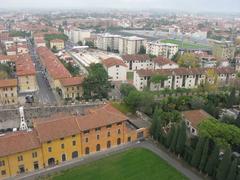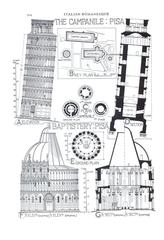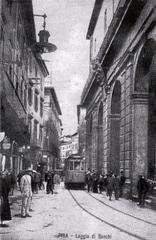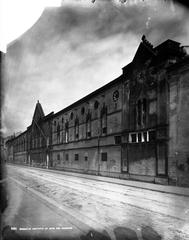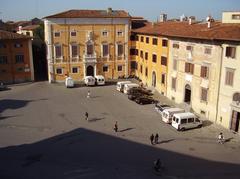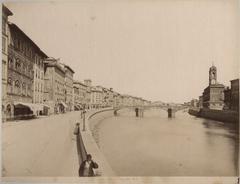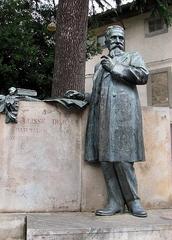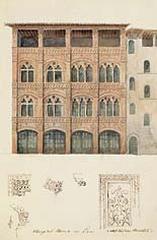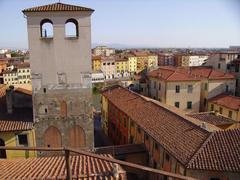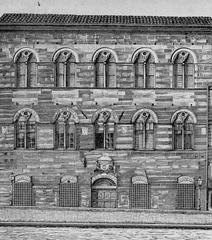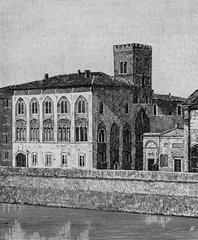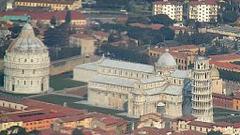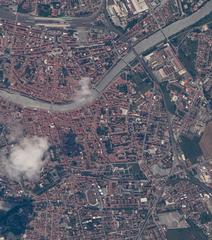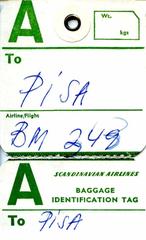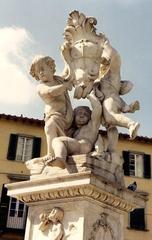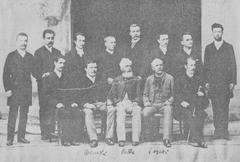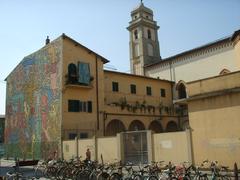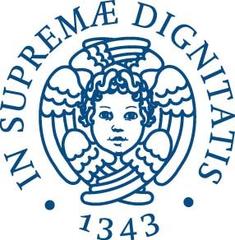Royal Palace National Museum Pisa: Visiting Hours, Tickets, and Comprehensive Guide
Date: 03/07/2025
Introduction
The Royal Palace National Museum in Pisa (Museo Nazionale di Palazzo Reale) is a distinguished testament to Tuscany’s rich political, artistic, and cultural legacy. Commissioned in 1583 by Francesco I de’ Medici and designed by the esteemed Renaissance architect Bernardo Buontalenti, this palace was conceived as both a grand residence and a symbol of Medici authority. Its riverside position along the Arno in the heart of Pisa offers an evocative setting and underscores its historical significance as a seat of power, artistic patronage, and innovation, notably with its connection to Galileo Galilei (Wikipedia, Terre di Pisa, Musei Italiani).
Today, the Royal Palace National Museum invites visitors to explore over 30 elegantly restored rooms brimming with Renaissance and Baroque architecture, Medici-era tapestries, paintings, armory, and decorative arts. The collections narrate Pisa’s aristocratic past from the Medici through the Lorraine and Savoy dynasties, all while providing insight into the lives of key historical figures (Turismo Pisa, polomuseale.ambientinarratividigitali.it). With guided tours, multilingual audio guides, and educational programs, the museum offers a rich experience for both history enthusiasts and casual visitors. Its central location near the Leaning Tower and Piazza dei Miracoli further enhances its appeal (Musei Italiani, Artsupp).
This guide presents a detailed overview of the Royal Palace National Museum Pisa, including its history, architecture, collections, visitor logistics, and practical tips to ensure a rewarding visit.
Table of Contents
- History and Architectural Significance
- Key Features and Collections
- Visitor Information
- FAQs
- Plan Your Visit and Further Reading
- References
History and Architectural Significance
Origins and Medici Context
The Royal Palace National Museum traces its roots to the late 16th century, coinciding with the consolidation of Medici power in Tuscany. Francesco I de’ Medici commissioned the palace in 1583, strategically relocating the ducal residence from the older “Palazzo Vecchio” to a prominent site on the Arno River. Bernardo Buontalenti was tasked with integrating existing medieval houses and towers, most notably the “Tower of the Golden Rod” (Torre della Vergadoro), into a unified Renaissance structure (Wikipedia, Terre di Pisa).
Architectural Evolution
Buontalenti’s Renaissance vision is evident in the palace’s symmetrical façade, elegant stonework, and harmonious proportions. The design honors Pisa’s medieval heritage while asserting Medici modernity. Over time, the palace served as the residence for three ruling dynasties:
- Medici Era: Opulent interiors, prestigious art, and furnishings.
- Lorraine Dynasty: 18th-19th century updates reflecting Enlightenment tastes.
- Savoy Occupation: Administrative adaptations and continued royal use (Terre di Pisa).
Transformation into a Museum
The palace was repurposed as a museum in 1989, preserving its aristocratic legacy and opening its treasures to the public. Today, it is also the headquarters for Pisa and Livorno’s Superintendency of Archaeology, Fine Arts, and Landscape (Turismo Pisa).
Key Features and Collections
Highlights: Tapestries, Paintings, and Armory
The museum’s collections are organized chronologically and thematically, offering:
- Medici Tapestries and Furnishings: Lavish Renaissance textiles and original furnishings.
- Portraiture: Including Bronzino’s “Eleonora di Toledo” and depictions of Cosimo I de’ Medici and the Knights of St. Stephen (polomuseale.ambientinarratividigitali.it).
- Armory of the Gioco del Ponte: Over 900 Lombard-crafted armaments linked to Pisa’s martial traditions.
- Italian and Flemish Paintings: Notable works by Rosso Fiorentino, Raphael, and the Gioli brothers.
The Tower of the Golden Rod and Scientific Heritage
The “Tower of the Golden Rod” is a rare medieval survivor incorporated into the palace, with historical ties to Galileo Galilei’s early experiments (Terre di Pisa).
Modern Additions and the Gipsoteca
Recent acquisitions include works by Plinio Nomellini and other modern Italian artists, as well as a gipsoteca (plaster cast gallery) and sculptures by Italo Griselli.
Visitor Information
Location and Accessibility
- Address: Lungarno Antonio Pacinotti, 46, 56126 Pisa, Italy
- Setting: Overlooks the Arno River, a short walk from the Leaning Tower and Piazza dei Miracoli (Artsupp).
- Public Transport: Accessible by foot, bus, or taxi from Pisa Centrale railway station (approx. 20 minutes’ walk).
Opening Hours and Tickets
- Standard Hours: Tuesday–Sunday, 9:00 AM–7:00 PM (last entry 6:00 PM)
- Closed: Mondays and major public holidays
- Tickets: General admission €10; reduced €5 (EU citizens 18–25, seniors, students); free for children under 18 and other qualifying categories
- Purchase: Online via the official website or at the door
Facilities and Accessibility Services
- Wheelchair Access: Ramps and elevators available. For specific needs, contact the museum in advance.
- Restrooms: Provided; no in-house café, but many options nearby.
- Parking: Limited in the area; public lots and street parking available along the Lungarno.
Guided Tours and Educational Activities
- Guided Tours: Offered in multiple languages. Free guided visits on select dates; audio guides available for rent.
- Educational Programs: Workshops and materials for children and families (Musei Italiani – Educational Activities).
Nearby Attractions and Suggested Itineraries
Within walking distance:
- Leaning Tower of Pisa and Piazza dei Miracoli
- Pisa Cathedral, Baptistery, and Camposanto
- Museo di San Matteo, Palazzo Blu, Church of San Nicola
Recommended: Combine your visit with other city landmarks for a full day of cultural exploration (GPSmyCity).
FAQs
Q: What are the Royal Palace National Museum visiting hours?
A: Tuesday–Sunday, 9:00 AM–7:00 PM. Closed Mondays. Always check the official website for updates.
Q: How much are tickets?
A: €10 general admission; €5 reduced; free for children under 18.
Q: Is the museum accessible?
A: Yes, with ramps and elevators.
Q: Are there guided tours?
A: Yes, in multiple languages, including free tours on special dates.
Q: Can I combine my visit with other Pisa attractions?
A: Absolutely—many major sites are within a 10-minute walk.
Q: Is photography permitted?
A: In most areas; please confirm on arrival.
Plan Your Visit and Further Reading
The Royal Palace National Museum offers a unique journey through Pisa’s aristocratic and artistic past, providing a tranquil and insightful alternative to the city’s more crowded sites. To maximize your experience:
- Check current opening hours and purchase tickets in advance.
- Consider guided tours or audio guides for a deeper understanding.
- Combine your visit with other Pisa historical sites for a complete itinerary.
- Stay updated on exhibitions and events through the museum’s official channels.
Download the Audiala app for interactive maps, audio guides, and more travel resources. Follow us on social media for expert tips and event notifications.
References
- National Museum of the Royal Palace, Wikipedia, 2024
- Royal Palace National Museum Pisa, Terre di Pisa, 2024
- Museo Nazionale di Palazzo Reale, Polomuseale Ambienti Narrativi Digitali, 2024
- Royal Palace National Museum Pisa, Turismo Pisa, 2024
- Museo Nazionale di Palazzo Reale, Musei Italiani, 2024
- Royal Palace National Museum Pisa, Artsupp, 2024
- Visit Tuscany – National Museum of the Royal Palace Pisa, 2024
- La Nazione Pisa – Medici Exhibition, 2024
- Notte dei Musei Pisa, Comune di Pisa, 2024
- Uffizi Galleries – Palazzo Reale Pisa Exhibition, 2024
